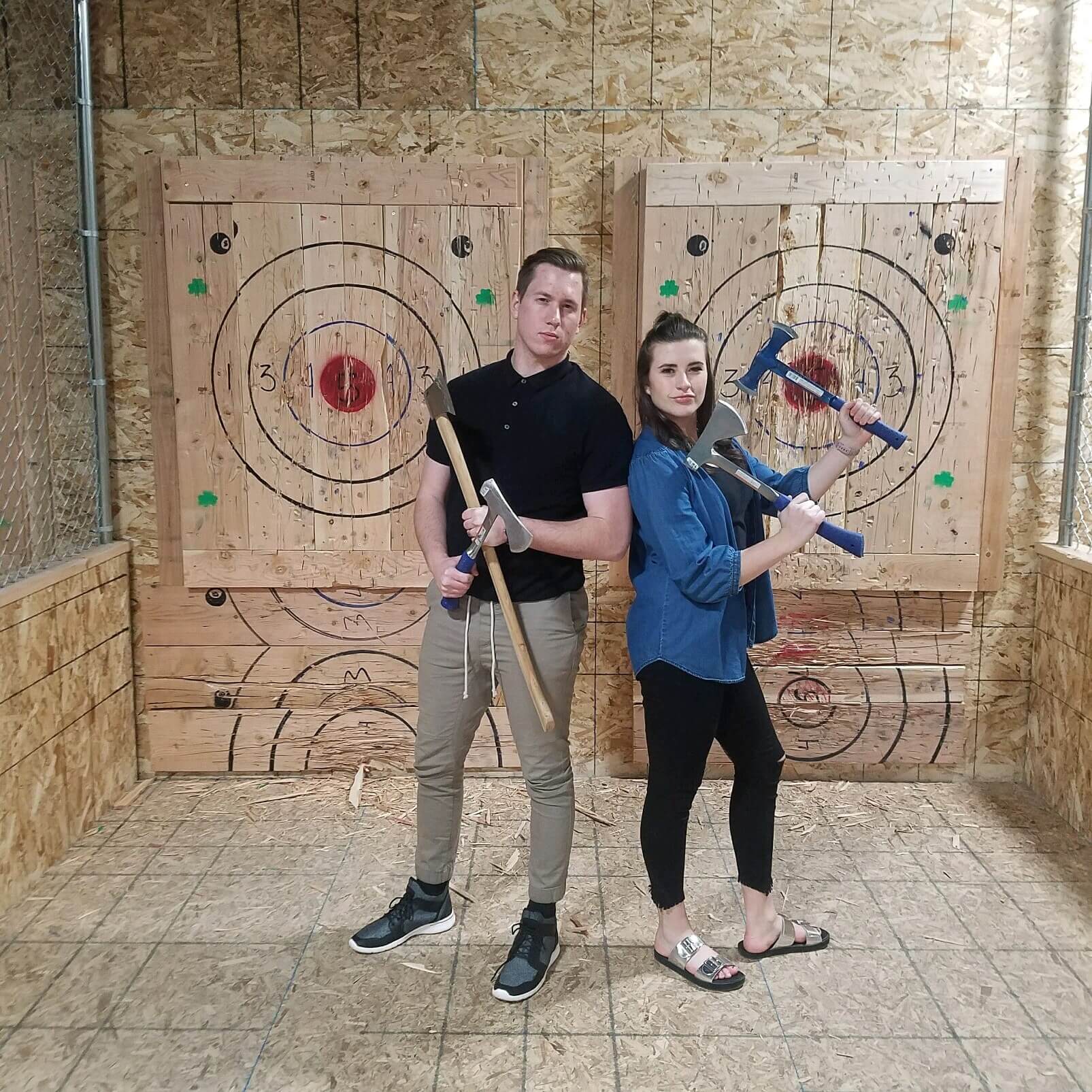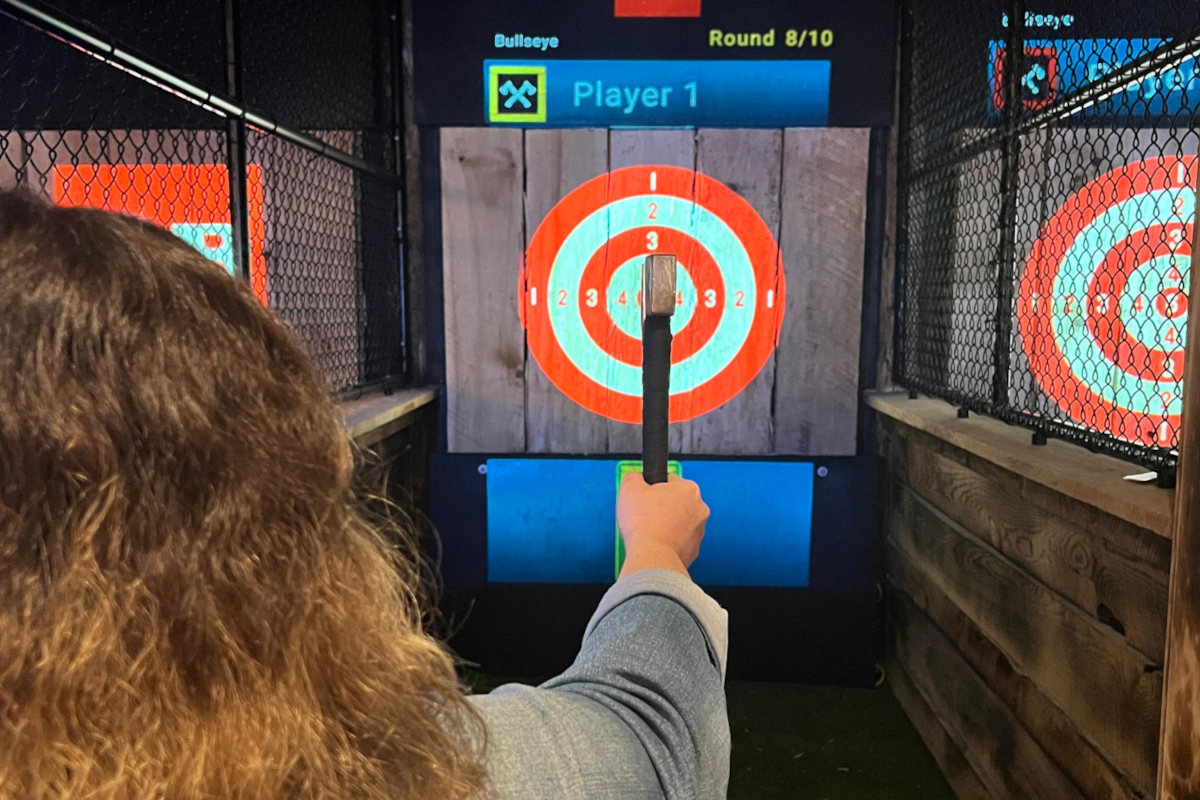Step Up Your Game with Axe Throwing Denver: Master Your Competencies Today
Step Up Your Game with Axe Throwing Denver: Master Your Competencies Today
Blog Article
The Enjoyable of Axe Throwing: Exactly How This Sporting Activity Incorporates Skill and Adrenaline for a Fun Time
Axe throwing has emerged as a mesmerizing sporting activity that masterfully intertwines the requirement for accurate ability with the thrill of adrenaline, offering individuals a engaging and special experience. The act of hurling an axe towards a target demands concentration and technique, all at once promoting an atmosphere of friendship and pleasant rivalry.
The Origins of Axe Throwing
Axe tossing, a leisure task that has actually acquired considerable appeal in recent years, traces its roots back to ancient times. The earliest documents of axe usage in competitive contexts are discovered amongst the Celts and Vikings, that tossed axes for sport as well as in fight training.
Middle ages European warriors, especially throughout the Middle Ages, practiced axe tossing as component of their martial training. The Francisca, a sort of throwing axe utilized by the Franks, came to be iconic for its dangerous precision. This standard weapon was made to be thrown at opponent guards and shield, showcasing its dual utility in both sporting activity and fight.
In more current background, axe throwing saw a rebirth in the logging camps of North America in the 20th and 19th centuries. Lumberjacks would certainly participate in friendly competitors, evaluating their precision and toughness by targeting at wood targets. This development from a survival ability to a leisure activity has actually paved the method for its modern renewal, with committed places and organizations now celebrating the sporting activity globally.
Tools You Required
Recognizing the rich background of axe tossing enhances the appreciation of the sport's modern-day version. Central to this thrilling task is the equipment, which is essential for both safety and performance. The primary tool is, naturally, the axe. For competitive and recreational axe throwing, one of the most commonly used type is the hatchet, generally weighing in between 1.25 to 2 pounds with a deal with length of about 16 inches. The axe ought to have a sharp, properly maintained blade and a manage made from sturdy timber or composite product, guaranteeing a good grasp and equilibrium.
Just as vital is the target. Regulation targets are built from wood, with softwood varieties like yearn or cottonwood being liked for their capability to hold the axe and soak up. The target is generally split into five concentric circles, each with a details point value, to assist in rating.
Safety gear, however frequently forgotten, is vital. Protective gloves can boost grip and protect against blisters, while closed-toed shoes are a should to protect feet from gone down axes (denver axe throwing). A well-lit, spacious throwing location, full with safety barriers, guarantees a regulated environment where participants can focus on honing their skills.
Fundamental Techniques Explained
Mastering the essential techniques of axe throwing is necessary for both safety and security and efficiency. The dominant hand needs to be positioned directly listed below the axe head, while the non-dominant hand sustains the end of the handle.
Your leading foot needs to be somewhat ahead, straightening with your target. This positioning aids in keeping security and routing power precisely in the direction of the target.

Safety And Security First
Making certain safety and security in axe throwing is critical to developing a satisfying and injury-free experience. Precaution start with the place format. A properly designed axe throwing center functions clear demarcations in between tossing lanes, tough backdrops to capture roaming axes, and non-slip floor covering to prevent mishaps. Furthermore, sufficient lights is vital to help participants maintain visual precision and spatial recognition.
Benefits of Axe Throwing
Axe tossing offers a myriad of benefits that prolong past basic leisure. Literally, it offers a full-body workout, engaging muscle mass in the arms, shoulders, back, and core. The repetitive motion of throwing the axe likewise boosts hand-eye control and fine electric motor abilities. For those seeking to boost their total health and fitness, axe throwing can function as a vibrant and interesting form of workout.
Psychologically, axe tossing requires technique, focus, and accuracy, making it a superb method to develop cognitive abilities. The concentration required to strike the target can offer as a kind of mindfulness, allowing individuals to clear their minds and decrease stress. This psychological involvement can be especially advantageous in assisting individuals establish much better analytic abilities and mental resilience.
Socially, axe throwing is frequently enjoyed in team setups, fostering team-building and camaraderie. Whether as component of a business event or a laid-back outing with buddies, the sporting activity urges communication and cooperation. Furthermore, the common experience of discovering and boosting together can enhance partnerships and produce enduring memories.
Verdict

The earliest documents of axe usage in affordable contexts are discovered amongst the Celts and Vikings, who tossed axes for sport as well as in fight training. Launch the axe when your hands are roughly at eye level, allowing the axe's natural rotation to lead it towards the target.
A well-designed axe tossing facility attributes clear demarcations between tossing lanes, tough backdrops to catch stray axes, and non-slip floor covering to prevent mishaps. Participants need to be advised on the correct means to take care of and throw the axe, emphasizing regulated, deliberate activities over strong throws.
In recap, axe tossing stands out as a sport that masterfully integrates ability, precision, and adrenaline.
Report this page